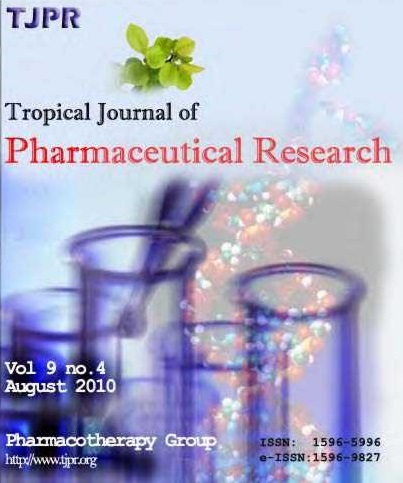Embelin enhances the osteogenic potential of LPS-induced periodontal ligament stem cells by activating AMPK and SIRT1
IF 0.6
4区 医学
Q4 PHARMACOLOGY & PHARMACY
引用次数: 0
Abstract
Purpose: To investigate the role of embelin in periodontal ligament stem cells (PDLSCs) in an in vitro model of periodontitis.Methods: Lipopolysaccharide (LPS)-stimulated PDLSCs was used to construct a periodontitis cell model. PDLSCs in the treatment group were pretreated with different concentrations of Embelin, and CCK-8 and TUNEL staining were used to analyze cell viability and apoptosis. Enzyme-linked immunosorbent assay (ELISA) kits were used to evaluate the levels of inflammatory cytokines (TNF-α, IL-1β, IL-6, and MCP-1) while reactive oxygen species levels were assessed by 2',7'- dichlorodihydrofluorescein diacetate (DCFH-DA) staining. Subsequently, osteogenic marker, ALP activity and protein expression levels of Runx2, OCN and BMP-2 in PDLSCs were evaluated by western-blot assay; AMPK and SIRT1 levels were also determined using Western blot assay.Results: Embelin pretreatment inhibited PDLSCs apoptosis, inflammatory factors, and oxidative stress, but up-regulated ALP, Runx2, OCN, and BMP-2 levels (p < 0.05). In addition, AMPK phosphorylation and SIRT1 protein levels were regulated by embelin (p < 0.05).Conclusion: Embelin exerts anti-inflammatory, anti-oxidative and osteogenic differentiation effects in LPS-induced PDLSCs cells in vitro by activating AMPK/SIRT1 signaling. Therefore, the compound has potentials for use in the management of periodontitis.Embelin通过激活AMPK和SIRT1增强lps诱导的牙周韧带干细胞的成骨潜能
目的:探讨内皮素在牙周炎模型牙周韧带干细胞(PDLSCs)中的作用。方法:采用脂多糖(LPS)刺激PDLSCs构建牙周炎细胞模型。处理组用不同浓度的Embelin预处理PDLSCs, CCK-8和TUNEL染色分析细胞活力和凋亡情况。采用酶联免疫吸附法(ELISA)检测炎症因子(TNF-α、IL-1β、IL-6和MCP-1)水平,采用2′,7′-二氯双氢荧光素双乙酸酯(DCFH-DA)染色检测活性氧水平。western-blot检测成骨标志物、ALP活性及Runx2、OCN、BMP-2蛋白表达水平;Western blot法检测AMPK和SIRT1水平。结果:Embelin预处理可抑制PDLSCs的凋亡、炎症因子和氧化应激,但可上调ALP、Runx2、OCN和BMP-2水平(p <0.05)。此外,AMPK磷酸化和SIRT1蛋白水平受栓塞蛋白调控(p <0.05)。结论:Embelin通过激活AMPK/SIRT1信号通路,在体外lps诱导的PDLSCs细胞中发挥抗炎、抗氧化和成骨分化作用。因此,该化合物有潜力用于牙周炎的管理。
本文章由计算机程序翻译,如有差异,请以英文原文为准。
求助全文
约1分钟内获得全文
求助全文
来源期刊
CiteScore
1.00
自引率
33.30%
发文量
490
审稿时长
4-8 weeks
期刊介绍:
We seek to encourage pharmaceutical and allied research of tropical and international relevance and to foster multidisciplinary research and collaboration among scientists, the pharmaceutical industry and the healthcare professionals.
We publish articles in pharmaceutical sciences and related disciplines (including biotechnology, cell and molecular biology, drug utilization including adverse drug events, medical and other life sciences, and related engineering fields). Although primarily devoted to original research papers, we welcome reviews on current topics of special interest and relevance.

 求助内容:
求助内容: 应助结果提醒方式:
应助结果提醒方式:


